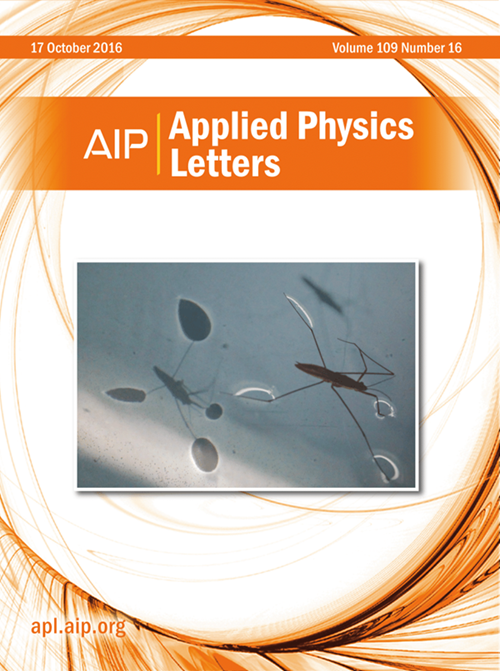Magneto-optical trap with a hollow grating and an additional retroreflected laser beam
IF 3.5
2区 物理与天体物理
Q2 PHYSICS, APPLIED
引用次数: 0
Abstract
A magneto-optical trap of cesium atoms was generated by applying a circularly polarized cooling laser beam onto a reflective two-dimensional diffraction grating with an aperture and by retroreflecting the incident beam passing through the aperture while reversing the circular polarization. The cooling laser beams comprised the incident, retroreflected, and four diagonally diffracted beams at an angle of 50° with respect to the normal direction of the grating surface. The intensity of the retroreflected beam was carefully adjusted to balance the radiation forces acting on the atoms. A significant number of cold atoms (7.0 × 106) were captured, in spite of the difficulty in a magneto-optical trap of cesium atoms, using nonorthogonal cooling beams owing to the high nuclear spin. The significance of the retroreflected beam in the trapping process was highlighted when the intensity of the retroreflected beam was reduced, resulting in the absence of trapped atoms. Notably, the cold atom cloud was generated near the edge of the region, where all the cooling beams were overlapped. The phenomenon is explained by the numerical calculations of the radiation forces considering all the Zeeman sublevels in the cooling transition and the Gaussian intensity profile of the incident beam.具有中空光栅和附加反向反射激光束的磁光阱
将圆偏振冷却激光束照射到带孔的反射二维衍射光栅上,并将穿过该衍射光栅的入射光束反向反射,从而产生铯原子的磁光阱。冷却激光束包括入射、反向反射和四束对角线衍射光束,光束相对于光栅表面的法线方向成50°角。反向反射光束的强度经过仔细调整,以平衡作用在原子上的辐射力。尽管铯原子的磁光阱存在困难,但由于核自旋高,使用非正交冷却束捕获了大量的冷原子(7.0 × 106)。当反向反射光束的强度降低,导致没有被捕获的原子时,反向反射光束在捕获过程中的重要性被突出。值得注意的是,冷原子云是在区域边缘附近产生的,在那里所有的冷却光束都是重叠的。考虑冷却跃迁中所有的塞曼亚能级和入射光束的高斯强度分布,通过对辐射力的数值计算来解释这一现象。
本文章由计算机程序翻译,如有差异,请以英文原文为准。
求助全文
约1分钟内获得全文
求助全文
来源期刊

Applied Physics Letters
物理-物理:应用
CiteScore
6.40
自引率
10.00%
发文量
1821
审稿时长
1.6 months
期刊介绍:
Applied Physics Letters (APL) features concise, up-to-date reports on significant new findings in applied physics. Emphasizing rapid dissemination of key data and new physical insights, APL offers prompt publication of new experimental and theoretical papers reporting applications of physics phenomena to all branches of science, engineering, and modern technology.
In addition to regular articles, the journal also publishes invited Fast Track, Perspectives, and in-depth Editorials which report on cutting-edge areas in applied physics.
APL Perspectives are forward-looking invited letters which highlight recent developments or discoveries. Emphasis is placed on very recent developments, potentially disruptive technologies, open questions and possible solutions. They also include a mini-roadmap detailing where the community should direct efforts in order for the phenomena to be viable for application and the challenges associated with meeting that performance threshold. Perspectives are characterized by personal viewpoints and opinions of recognized experts in the field.
Fast Track articles are invited original research articles that report results that are particularly novel and important or provide a significant advancement in an emerging field. Because of the urgency and scientific importance of the work, the peer review process is accelerated. If, during the review process, it becomes apparent that the paper does not meet the Fast Track criterion, it is returned to a normal track.
 求助内容:
求助内容: 应助结果提醒方式:
应助结果提醒方式:


